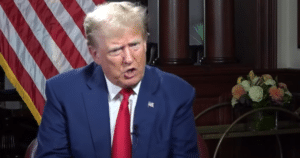DOGE lays off over 3,500 probationary HHS employees
Donald Trump promised to clean up America's federal government with his famous "drain the swamp" approach, and he is keeping his word about a month into his second term.
Trump's Department of Government Efficiency (DOGE), led by Elon Musk, "terminated employment for 3,600 probationary Health and Human Services (HHS) employees on" Feb. 14, according to Fox News.
While under half of the HHS's probationary employees were terminated, the move is still expected to save about $600,000,000 in taxpayer dollars annually.
That's an average of over $160,000 per year per expendable employee, which shows just how bloated America's federal government has become.
Situations like this are exactly why Trump needed to create DOGE.
Not all government employees are expendable though, so DOGE went through a careful process to make sure those who were serving in specialized or critical roles were not laid off.
According to Fox, probationary employees who were excluded from the layoffs include:
- Employees working on refugee and resettlement within the Administration of Children and Families (ACF)
- Employees working on emergency preparedness and response within Administration for Strategy Preparedness and Response (ASPR), Centers for Disease Control and Prevention (CDC), and other divisions of HHS
- Scientists conducting research at the CDC and National Institutes of Health (NIH)
- Frontline healthcare providers at the Indian Health Service (HIS)
- Employees working on Medicare and Medicaid at the Centers for Medicare and Medicaid Services (CMS)
- Employees reviewing and approving drugs or conducting inspections at the Food and Drug Administration (FDA)
DOGE identified which employees to retain by first keeping those associated with the critical functions of the HHS, such as frontline healthcare providers, scientists conducting innovative research, and personnel responding to emergencies.
After those employees were protected, employees with proper qualifications for their roles were also retained.
"In many cases where there was a lack of clarity, we worked directly with folks who either knew the employees or knew the work of the division to clarify the exact work they were doing," a Trump official said about who to keep and who to cut.
"Healthcare is obviously an important goal for the new Secretary, for the president," the official said.
The official continued, "We want to make the government more efficient and want to reduce the size of the federal workforce, but we also want to make sure we’re very thoughtful about the critical functions that the government needs to perform."
"Typically, contracts and grants are the two main mechanisms the federal government has for dispersing funds," the official concluded. "And then we’re also thinking about regulations. Every agency is different, but the things we’re looking at are pretty similar across every agency."



